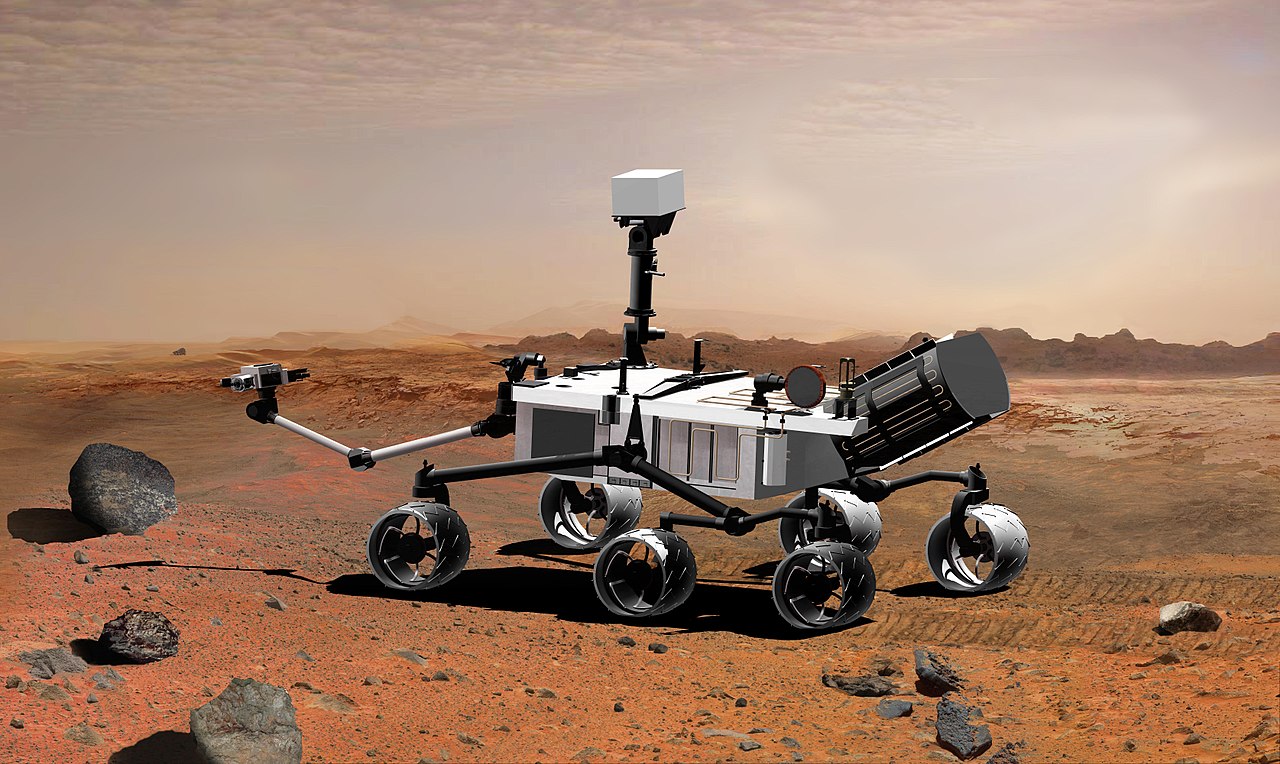Mars tra latino e inglese
Mars l’avventura continua sul pianeta gemello della Terra in perfetto stile Cronache Marziane: le strisce oscure che solcavano il pianeta Marte – ed erano ampie quanto il Mare Adriatico o il Mar Rosso – non potevano essere dei veri canali, altrimenti avrebbero avuto una portata talmente ampia da rendere impossibile imbrigliare le acque e quindi non sarebbero stati di utilità alcuna.
Mars (Marte) quindi, secondo Schiaparelli, ospitava zone di vegetazione estese ai lati dei canali stessi – che quindi meglio sarebbe stato chiamare valli – ed i cui pendii non erano quindi accessibili da parte delle acque che fluivano sul fondovalle; dalla Luna, si chiedeva Schiaparelli, non si potrebbe forse osservare il nascere e il succedersi delle messi e del frumento sul nostro pianeta molto ampie?
Mars (Marte) domande e certezze by Martian Chronicles: assodato che queste valli di così grande ampiezza non potevano essere di origine artificiale, come si poteva far giungere anche ai fianchi della vallata l’acqua che scorreva sul fondo della depressione? La risposta faceva comprendere anche il fenomeno della geminazione di cui ale precedenti puntate: la spiegazione dettagliata del fenomeno si trova in uno scritto risalente al 1895, intitolato La Vita sul Pianeta Marte pubblicato sempre sulla già citata rivista Natura e Arte: Semel in anno licet insanire (una volta l’anno è lecito uscire di senno, come dicevano i romani?) era la nota scritta in capo alla pagina iniziale perché, secondo Schiaparelli i Marziani avrebbero ideato, per incanalare l’acqua proveniente dalla calotta polare boreale, un ingegnoso sistema di chiuse che prevedeva la costruzione di una serie di canali paralleli fra loro e altresì paralleli alla sponda della valle.
Mars e questi canali avevano per Schiaparelli delle dimensioni comparabili al Canale Cavour o al grande canale del Gange…
(continua)
English Version
Mars the adventure continues on the twin planet of the Earth: the dark stripes that plowed the planet – and were as wide as the Adriatic Sea or the Red Sea – could not have been real channels, otherwise they would have had such a wide range as to make it impossible to harness the waters and therefore would not have been of any use. These were therefore areas of vegetation extended to the sides of the channels themselves – which therefore it would have been better to call valleys – and whose slopes were therefore not accessible by the waters that flowed on the valley floor. From the Moon, Schiaparelli wondered, could it not perhaps be observed the birth and the succession of very large crops and wheat on our planet? Having established that these valleys of such great breadth could not be of artificial origin, how could the water flowing at the bottom of the depression reach the sides of the valley as well? The answer also included the phenomenon of twinning. The detailed explanation of the phenomenon is found in a paper dating back to 1895, entitled Life on the Planet Mars, also published in the journal Nature and Art. Semel in anno licet insanire (once a year it is legitimate to go out of your mind, as the Romans said?) was the note written at the top of the initial page. According to Schiaparelli, the Martians had devised an ingenious system of locks that involved the construction of a series of channels parallel to each other and also parallel to the side of the valley to channel the water from the northern polar cap. For Schiaparelli, these canals were comparable in size to the Cavour Canal or the great Ganges canal …
(to be continued)
Latinorum versio
Mars mirificus continuat in geminae planeta de terra, et tenebrosa, denudat, quod disiecitque rates evertitque planeta – et erant portarum secundum longitudinem portarum mare Adriaticum sive ad Rubrum Mare – non potest esse reales canales, aliter se non habuisse tantam lateque ad expediendum animum ita vacatur ut tumultus itaque aquas, et non fuit ab omnibus usu. His igitur locis sibi venas vegetatione laterum porrigi – quare melius fuisset dicere convallium – et ideo non accessibilis declivia torrentis aquae inundaverunt super pavimentum. A Luna Schiaparellius mirantibus forte posset esse successio ortu maximam frugum leo triticum? Latitudo camporum haec confirmata tanta posset esse artificii origo unde aquae ad lacus ima parte ad vallem tam? Et responsum est quod includitur quaedam aetatis gemellas. Quod est in explicatione Phaenomeni a charta Morbi ad MDCCCXCV itaque libellum de Vita planetae Martis etiam edita in Acta Ars et natura. Licet semel in anno insanire (semel in anno fas est ut ex animo, cum ad Romanos ait?) nota quod scriptum est in summo ex initial page. In Schiaparelli opinione, ingenioso excogitatum Martiani ratio crinis serie involvunt constructione cursus invicem parallela lateri parallela aquilone torrentis aquas polares ad aggrediendum cap. Quia haec Schiaparelli rivos aquarum mole et in simili ad Gangem magnam Canalis Cavour Canalis aut …
(Continuat)
